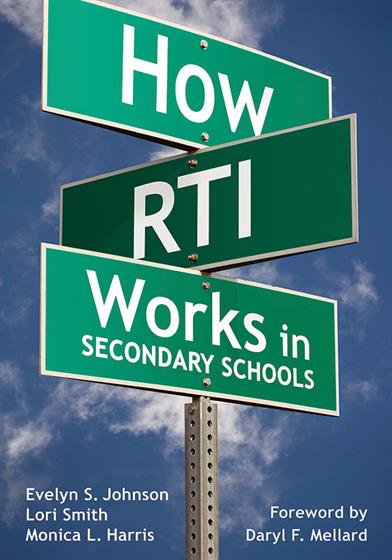Foreword
Acknowledgments
About the Authors
1. What Is RTI?
Purpose of RTI at the Secondary Level
How RTI Works
How RTI Fits With Other Education Initiatives
Purpose of This Book
How This Book is Organized
Summary
2. Implementation and Continuous Improvement
Overview
What are the Desired Outcomes?
How is RTI Expected to Lead to These Outcomes?
What Must Happen If RTI is to Work as Expected?
What Data Can be Used to Inform Implementation Efforts?
How Do We Develop a System for Analyzing and Evaluating Data?
What Systems are Needed for continuous Improvement of the RTI Process?
Summary
3. Leadership Perspectives on RTI
Overview
What is My Role as Building Leader to Implement RTI?
How Do I Start the Process of Implementation?
What Will the Professional Development Needs Be?
RTI Focuses on Academics: What About Behavior?
What if We Identify too Many Kids in Need of Intervention?
What Resources Will I Need to Provide?
What If I Don't Get Things Right the First Time?
RTI Implementation in Practice
Summary
4. Universal Screening
Definition: What is Universal Screening?
Why is Accuracy Important?
Purpose of Screening at the Secondary Level
What Data Should Be Collected?
Implementation
Leader Tasks
Universal Screening in Practice
Summary
5. Tier 1 Instruction
Definition: What is Tier 1 Instruction?
Purpose of Tier 1 at the Secondary Level
Implementation
Tier 1 in Practice: Cheyenne Mountain Junior High School
Leader Tasks
Summary
6. Tier 2 and 3 Intervention
Definition: What is Tier 2 and Tier 3 Intervention?
Purpose of Tiers 2 and 3 at the Secondary Level
Implementation
Tier 2 in Practice: Mattawan High School
Tier 3 Implementation
Leader Tasks
Summary
7. Progress Monitoring
Definition: What is Progress Monitoring?
Purpose of Progress Monitoring at the Secondary Level
Implementation
Leader Tasks
Summary
8. Conclusion
How is RTI Expected to Lead to Improved Student Learning?
What is the Role of Leadership for Ensuring Successful RTI Implementation?
Why We are Optimistic About the Future of RTI: Two Case Stories
Summary
Appendix: RTI Implementation Checklist
Resources
References
Index




